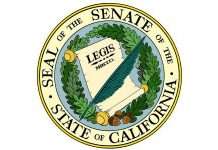In this episode of The Workplace podcast, CalChamber Executive Vice President and General Counsel Erika Frank is joined by employment law experts Bianca Saad and Matthew Roberts to discuss recent regulations that address how employers should respond if an employee tests positive for COVID-19.
COVID-19 cases are surging throughout the country and it is no different in California, Frank tells podcast listeners. In fact, some employers are starting to see their first case of COVID-19 pop up among their workforce. How, Frank asks, should an employer respond when their first worker tests positive for COVID-19?
When Your First Employee Tests Positive
This question is asked frequently on the CalChamber Labor Law Helpline, which shows how important this issue is for employers, Roberts replies. In addition to the general guidelines that have been released for some time, employers now have concrete legal requirements they must abide by if an employee tests positive for COVID-19.
First, the employer should make sure that the employee is excluded from the workforce. Then the employer needs to conduct contact tracing within the worksite to determine if there is anyone else who needs to be excluded from the worksite, he says.
The California Division of Occupational Safety and Health (Cal/OSHA) released emergency temporary standards that address a variety of issues related to COVID-19 in the workplace. These regulations came into effect earlier this week on November 30, 2020.
One of the first things the agency wants employers to do is determine if the COVID-19-positive employee has had “close contact” with anyone else in the worksite during periods of high exposure, Roberts explains.
“Close contact” is defined within the standards as a “cumulative period of 15 minutes over the course of a 24-hour period where the person who is positive was within six feet of somebody else,” he says. “And remember it’s cumulative over the course of this, so it doesn’t have to be 15 minutes all at once.”
Importantly, it does not matter if both workers were wearing a face mask. Even if an employee was wearing a face mask, but was within six feet of the COVID-19-positive employee for 15 minutes over the course of 24 hours, that employee is deemed to have been in close contact. The next step, Roberts explains, is to determine whether the contact happened during a high risk exposure period.
For an individual who is asymptomatic and has a positive test result, the high risk exposure period spans two days before the test was taken up until 10 days after the test was taken.
For an individual who has symptoms and has a positive test result, the high risk exposure period covers the two days before the onset of symptoms to 10 days after the symptoms first arose.
If an employee was in close contact with a COVID-19-positive individual during the high risk exposure period, the employee needs to be excluded from the workplace, Roberts says.
The goal of the regulations is to prevent an outbreak where an employer can potentially lose their entire workforce, he points out. This is why it’s important that employers get high risk employees out of the worksite.
Throughout this process, employers should also be sure to document the steps they took to investigate the exposure and the steps they took afterward, Roberts emphasizes. Part of the recent Cal/OSHA regulations is a requirement to establish and implement a comprehensive written COVID-19 Prevention Program, so employers should document the conversations they had with managers, supervisors and the employee who tested positive.
Employers should also keep in mind that they must keep confidential the identity of COVID-19-positive employees. Employers may tell employees that they may have been exposed, but cannot divulge the name of the person who may have exposed them, Roberts explains.
Local Health Departments
If there is a COVID-19 case in the workplace, employers should also bear in mind their local health agencies, as every local health department has developed its own set of requirements and reporting obligations. These are separate from state requirements, Saad stresses.
Most agencies have up-to-date information on their requirements available on their websites, so employers should routinely check the website of their local health department just as they routinely check the websites of the California Department of Public Health and the Centers for Disease Control and Prevention (CDC), she says.
Leave Options
Once an employee with COVID-19 has been excluded from the workplace, the employer should determine whether any leave should be administered to the employee, Saad tells listeners. Employees may be eligible for leave under the federal Families First Coronavirus Response Act (FFCRA), and some localities have their own COVID-19 supplemental sick leave programs that apply to larger employers as well.
On top of local ordinances, employers with more than 500 employees also are subject to a California COVID-19-related supplemental paid sick leave law that went into effect on September 9, 2020, AB 1867.
Resources
Up-to-date information on employment laws and links to government resources are available on CalChamber’s COVID-19 resource page, http://www.calchamber.com/coronavirus.
Information on local COVID-19 sick leave ordinances is available to CalChamber members on www.HRCalifornia.com.


